Iranian Treasures Of Intangible Cultural Heritage
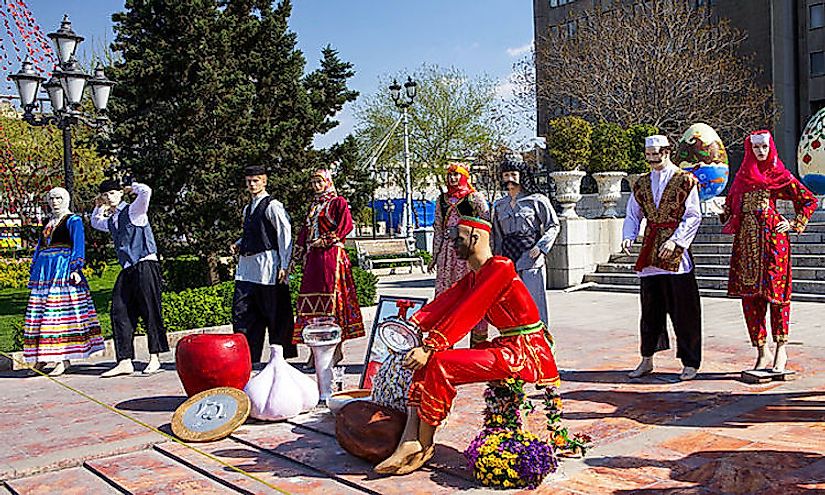
7. Qālišuyān rituals of Mašhad-e Ardehāl -
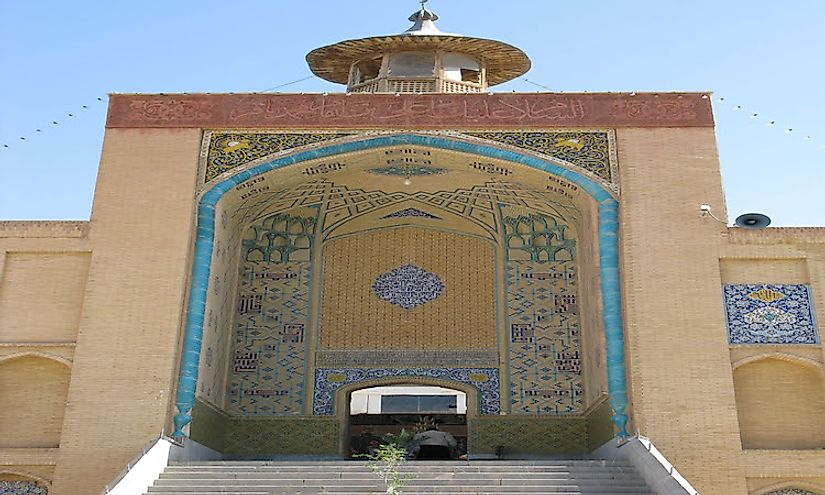
Mashhad-e Ardaha is a village in Iran’s Neyasar Rural District. It is a small village, and in 2006, there were only four families living in the village. The village is the site of the burial of Sultan Ali, the fifth Imam Muhammad al-Baqir’s son. The village is also famous for the annual Carpet Washing Ceremony. It is one of the most interesting ceremonies of the Shiites. It is associated with mourning. According to legend, Sultan Ali was killed in the village by his enemies. After his followers arrived, they wrapped his body in a carpet and washed it in a nearby stream. Since then, thousands of people from surrounding areas flock to Mashhad-e Ardehal during the second Friday of the Iranian month of Mehr to mourn the death of Sultan Ali. Often, pilgrims walk from their homes to the shrine in Mashhad-e Ardehal. A group of these pilgrims then carry the remains of the sacred carpet used to wrap Sultan Ali’s body on their shoulders and then symbolically beat the carpet to clean it and also show their anger towards the enemies of Ali who killed him. The remains of the carpet are then washed under a special stream whose waters are considered to be holy. Many pilgrims apply the water on their body and carry it home with them in bottles. The pilgrims finally return the carpet to the shrine and participate in a giant feast for free before returning to their respective homes.
6. Music of the Bakhshis of Khorasan -
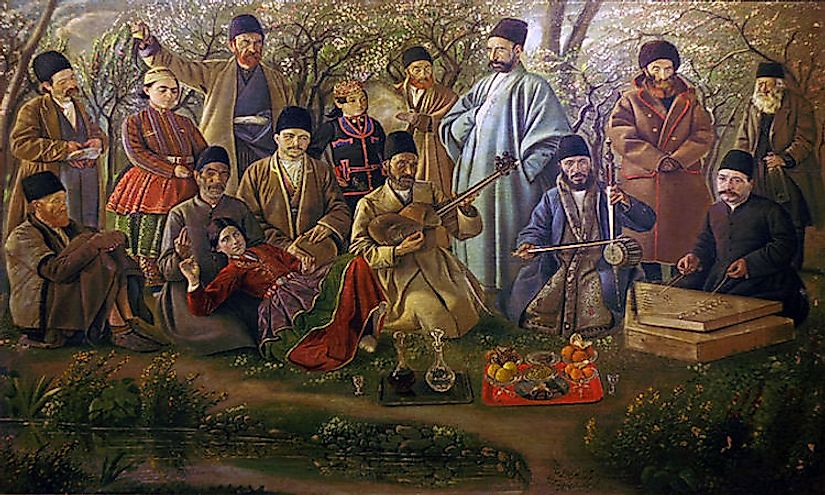
Khorasan, meaning "where the sun arrives from" is a region in Iran that is famous for its ethnic diversity and rich tradition. Due to the existence of great religious and linguistic diversity in Khorasan, the musical tradition here is very rich. The music scene also varies greatly within the region itself. In northern Khorasan, one can find the bakhshi narrating and singing stories in old Persian as well singing historical deeds of local figures in Kurdish. The Asheq playing the double-faced drum or “dohol," an oboe-like reed instrument called “sorna” and “qoshme" can also be seen in Khorasan. The Asheqs play at weddings and village feasts in the region. In the south of the region, the musical culture changes significantly. Here songs called “sotak” are played using musical instruments lime the "dayereh" (tambourine).
5. Pahlevani and Zoorkhanei rituals -
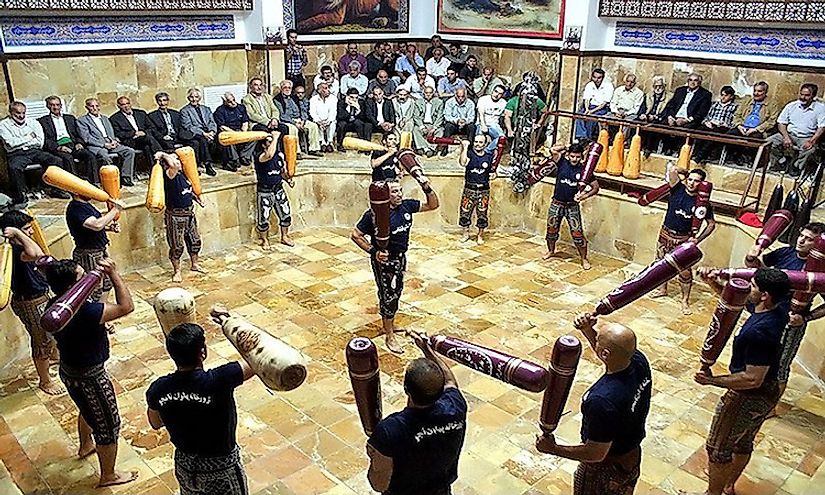
In Iran, the Pahlevāni and zoorkhāneh rituals were used to train warriors. The rituals are basically a traditional system of athletics. This form of athletics combines calisthenics, strength training, music, and martial arts to produce a unique system of training. It is one of the longest running forms of training in the world. Pahlevani And Zoorkhanei Rituals represents an integration of the spirituality of Sufism and Shia Islam with elements of pre-Islamic Persian culture. A domed structure called the zurkhāneh serves as the venue for the training sessions which consists of ritual gymnastic movements and a climax of combat practice.
4. Ritual dramatic art of Ta‘zīye -
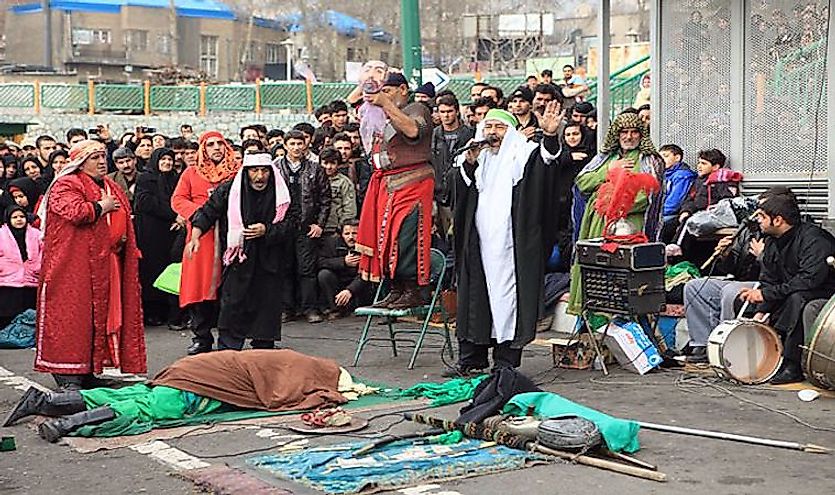
Ta'zieh literally means condolence, comfort and is derived from the root word “aza” meaning mourning. The art form is a type of passion play that is considered to be the Iranian theater’s national form. The art form has its origin in some well-known rites and mythologies like the Yadegar-e-Zariran, Sug-e-Siavush, and Mithraism. Ta’zieh has many characteristics similar to European opera and thus is often called Persian opera. The art form also influences Persian symphonic music and Persian cinema. Heroic tales of sacrifice and love and resistance to evil are the common themes used in Ta’zieh.
3. Carpet weaving in Kashan And Fars -
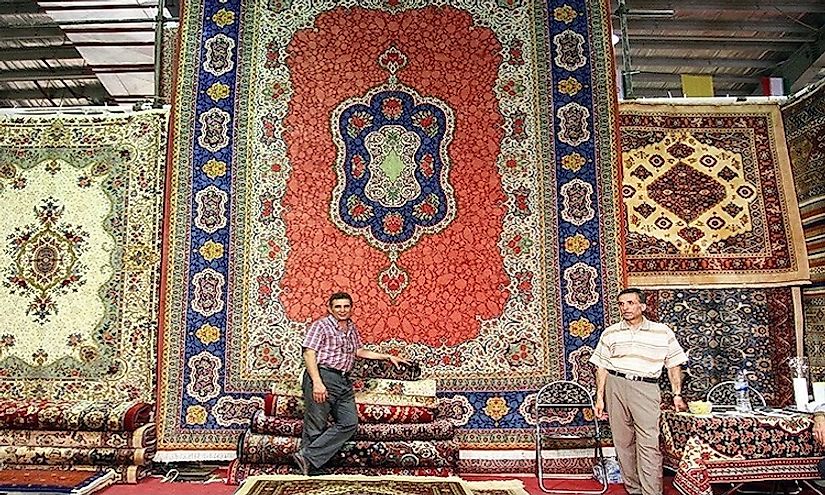
Famous for their beauty and high-quality texture, Iranian carpets or Persian carpets are made for both utilitarian and symbolic purposes. Carpet weaving is an integral part of Persian culture. The carpets are woven by Iran’s nomadic tribes, workers in workshops in villages and towns, and also royal court manufactories. Thus, the carpets woven represent the history of Iran and the peoples of the country. Karshan and Fars are two major locations for carpet weaving in Iran with their unique skills and techniques. The carpets woven here are of excellent quality and are manufactured by generations of skilled craftsmen living in the areas.
2. Novruz -
Iranian New Year is known as Novruz and is celebrated by Iranian people across the world. Also known as the Persian New Year, the event has been celebrated for over 3,000 years and marks the Iranian calendar’s first day of Farvardin. Novruz marks the beginning of spring, the day of the vernal equinox in the Northern Hemisphere. The festival is celebrated by people of different faiths and ethno-linguistic communities. However, for Zoroastrians, it is a holy day.
In Iran, Novruz is the most important holiday. Prior to the day, people start cleaning their homes and engage in shopping for new clothes and flowers. Charshanbe Suri is celebrated on the last Wednesday before Nowruz and people make bonfires and jump over them. Sparklers and fireworks are also set off. Banging spoons is a tradition celebrated during this time when people wearing disguises go door-to-door asking for snacks. Decorative tables with delicious goodies are laid out and are called Haft Seen. Family members gather around the table and enjoy the feast and exchange gifts with each other.
1. Radif of Iranian music -
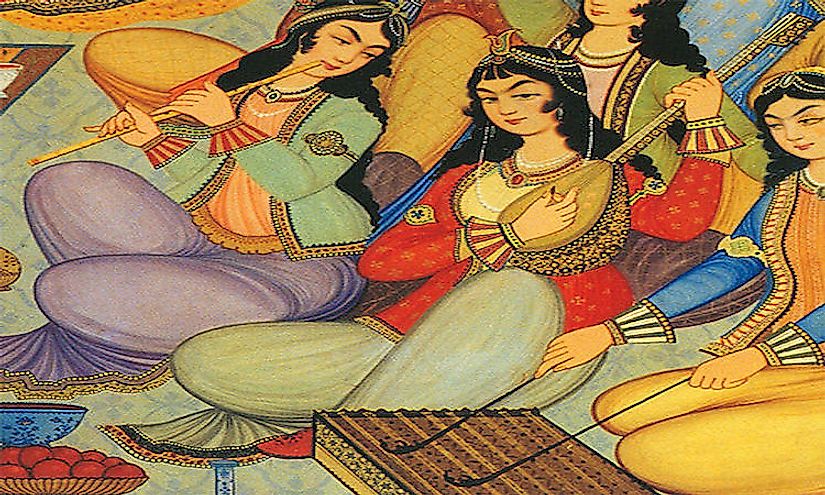
Radif is an integral and significant part of Iranian traditional music. It is a collection of numerous old melodic figures that has been passed from one generation to another in the country by oral tradition. The Radif organizes the melodies into Dastgah which is basically a collection of different tonal spaces. The Radif forms the base of traditional Iranian music, and the musical collection is passed from masters to their students, with each generation of musicians adding their own musical collection to the Radif. The preservation of this collection is thus dependent on the memory and mastery of the musicians of the country since it is an oral tradition. The young generation of Iran must exhibit love for the traditional music to ensure this intangible heritage of Iran continues to survive in the future.
UNESCO-Inscribed Iranian Treasures Of Intangible Cultural Heritage
| Rank | Element | Year Inscribed |
|---|---|---|
| 1 | Radif of Iranian music | 2009 |
| 2 | Novruz | 2009 |
| 3 | Traditional skills of carpet weaving in Kashan | 2010 |
| 4 | Traditional skills of carpet weaving in Fars | 2010 |
| 5 | Ritual dramatic art of Ta‘zīye | 2010 |
| 6 | Pahlevani and Zoorkhanei rituals | 2010 |
| 7 | Music of the Bakhshis of Khorasan | 2010 |
| 8 | Qālišuyān rituals of Mašhad-e Ardehāl in Kāšān | 2012 |







